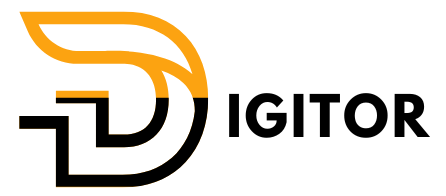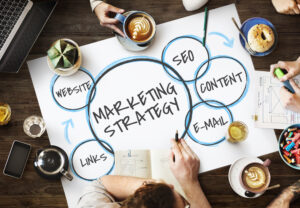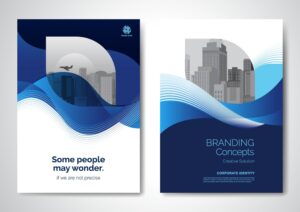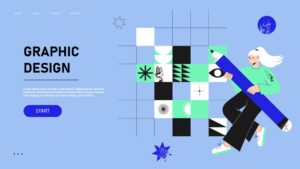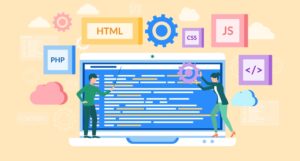Essential Graphic Design Tools Every Designer Should Know
Introduction
In the fast-paced world of graphic design, having the right tools is essential for creating visually stunning and professional-quality designs. Whether you’re a seasoned designer or just starting, knowing which tools to use can significantly impact your workflow, creativity, and the quality of your work. This guide will introduce you to the essential graphic design tools every designer should know, covering everything from software to hardware and resources.
Software Tools for Graphic Design
1. Adobe Creative Suite
The Adobe Creative Suite is the industry standard for graphic design. It includes essential tools like:
- Adobe Photoshop: Ideal for photo editing, digital painting, and creating complex designs.
- Adobe Illustrator: Perfect for vector-based designs, logos, and illustrations.
- Adobe InDesign: Used for layout design, particularly in print and digital publishing.
These tools provide designers with a comprehensive set of features to tackle any design project.
2. Sketch
Sketch is a popular design tool, especially in the UI/UX design community. It’s known for its simplicity and powerful vector editing capabilities, making it perfect for designing websites, mobile apps, and interfaces. Sketch also offers a robust set of plugins and integrations, making it highly customizable for your design needs.
3. Figma
Figma is a cloud-based design tool that has gained popularity for its collaboration features. It allows multiple designers to work on the same project simultaneously, making it ideal for team-based projects. Figma also supports vector editing, prototyping, and design systems, making it a versatile tool for modern designers.
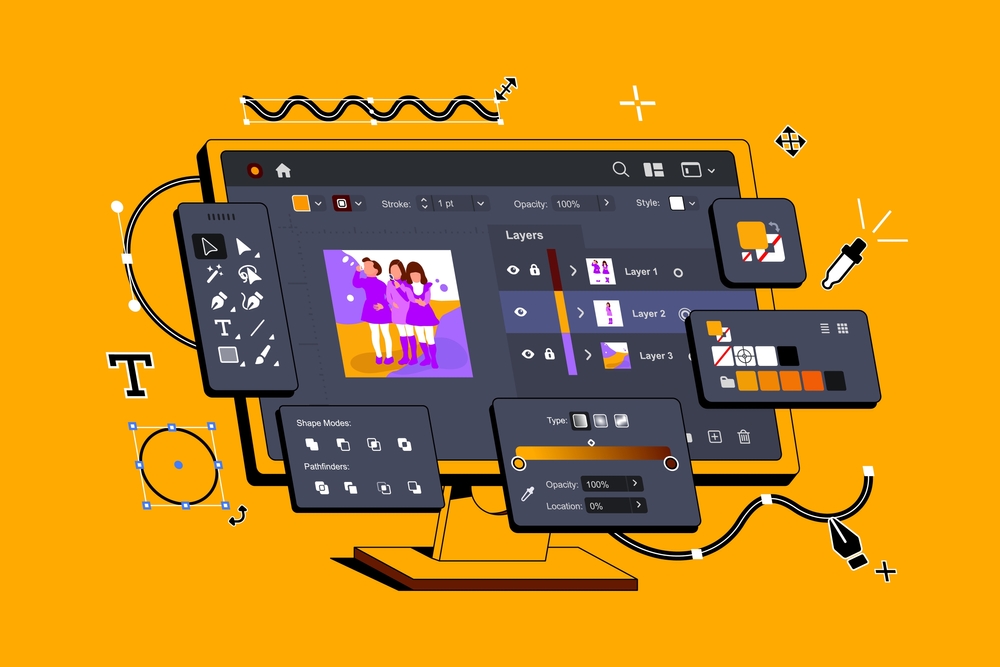
4. CorelDRAW
CorelDRAW is another vector-based design software that is particularly popular for logo creation, branding, and print design. It offers a range of tools similar to Adobe Illustrator but with a unique user interface that some designers prefer. CorelDRAW is also known for its robust file compatibility and powerful vector illustration tools.
5. Canva
Canva is an easy-to-use design tool that’s perfect for beginners or those looking to create quick, professional-looking designs without much fuss. It offers a wide range of templates for social media posts, presentations, and more. While it doesn’t have the advanced features of tools like Photoshop, it’s a great option for simple, clean designs.
Hardware Tools for Graphic Design
1. High-Resolution Monitor
A high-resolution monitor is essential for graphic designers who need to see fine details in their work. Monitors with 4K resolution or higher provide the clarity needed for tasks like photo editing, illustration, and typography. Color accuracy is also crucial, so look for monitors with a wide color gamut and factory calibration.
2. Graphics Tablet
A graphics tablet, such as those from Wacom, is a must-have for designers who do a lot of digital painting, drawing, or retouching. Tablets provide a natural, intuitive way to create with a stylus, offering pressure sensitivity and precision that a mouse simply can’t match. They are particularly useful for creating intricate designs and illustrations.
3. Powerful Computer
Graphic design software can be resource-intensive, so a powerful computer is essential. Look for a machine with a fast processor, plenty of RAM (at least 16GB), and a dedicated graphics card. Whether you prefer a desktop or a laptop, ensure it meets the demands of your software to avoid slowdowns and crashes during complex projects.
4. External Storage
Design projects, especially those involving high-resolution images and complex files, can take up a lot of space. External storage solutions like SSDs or cloud storage are essential for backing up your work and keeping your computer’s internal storage free. Cloud storage services like Google Drive or Dropbox also offer the added benefit of accessing your files from anywhere.
Online Resources for Graphic Designers
1. Stock Image Libraries
High-quality images can elevate any design, and stock image libraries are a great resource. Websites like Shutterstock and Unsplash offer a wide range of images, vectors, and illustrations that can be used in your projects. Whether you need photos for a website or icons for an app, these resources are invaluable.
2. Font Libraries
Typography is a crucial part of graphic design, and having access to a variety of fonts is essential. Websites like Google Fonts and Adobe Fonts provide thousands of fonts that can be used in your designs. Make sure to choose fonts that align with your brand and design style.
3. Inspiration Platforms
Staying inspired is key to maintaining creativity. Platforms like Behance and Dribbble showcase the work of designers from around the world. Browsing these platforms can provide new ideas, showcase emerging trends, and help you stay motivated in your design work.
Conclusion
Mastering graphic design requires not just talent, but also the right tools. From software like Adobe Photoshop and Illustrator to hardware like high-resolution monitors and graphics tablets, the tools you choose can make a significant difference in your work. By familiarizing yourself with these essential graphic design tools, you’ll be well-equipped to create stunning designs and take your creative projects to the next level.
Ready to upgrade your graphic design toolkit? Contact us to learn more about the tools and resources that can help you excel in your design career.
For further reading, check out Adobe’s Creative Cloud or explore the Wacom Store for top-quality graphic tablets.
Explore more related articles to deepen your understanding and make informed choices about graphic design techniques
Why Custom Website Development is Essential for Your Brand
How to Choose the Best Graphic Design Services for Your Business
